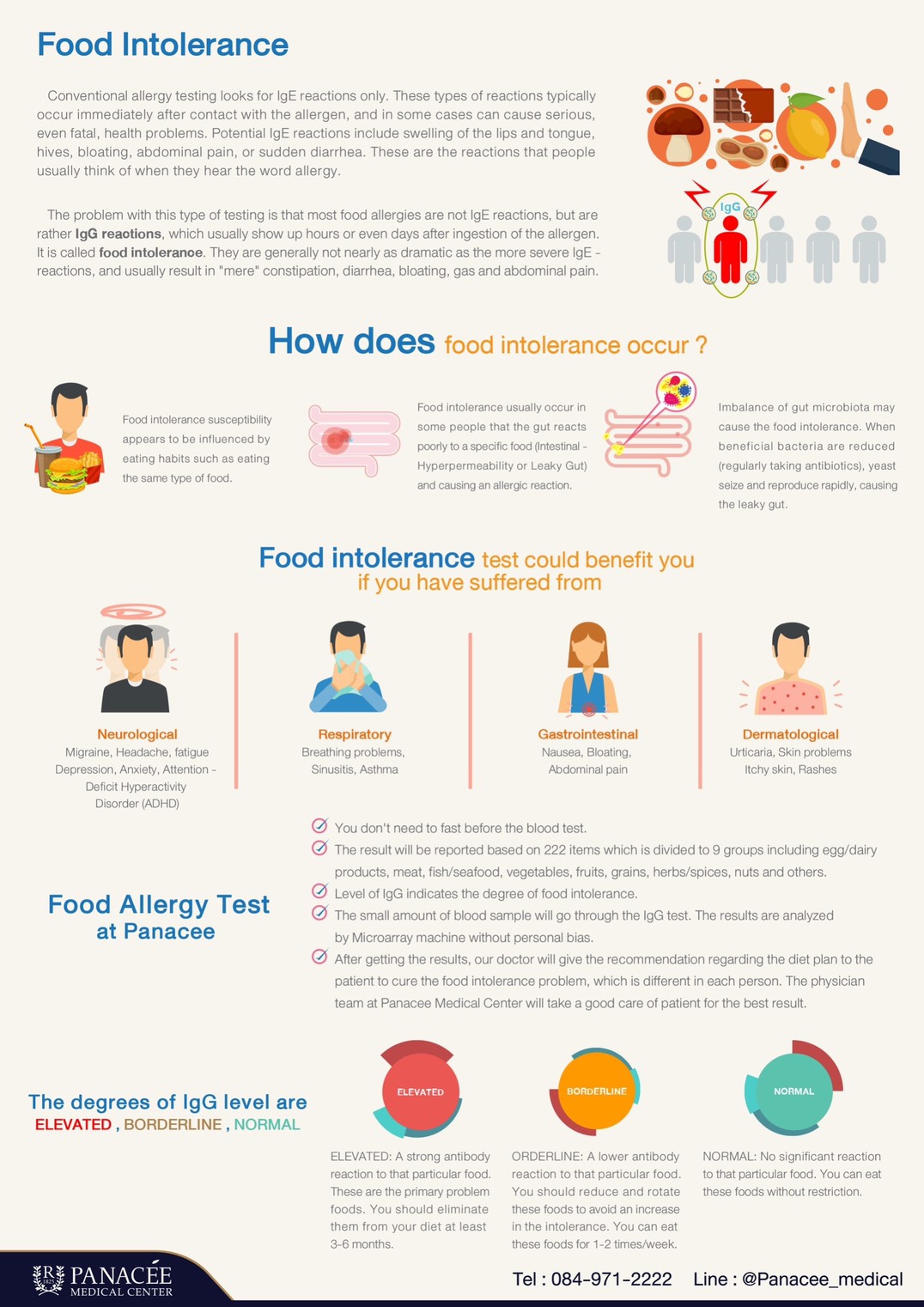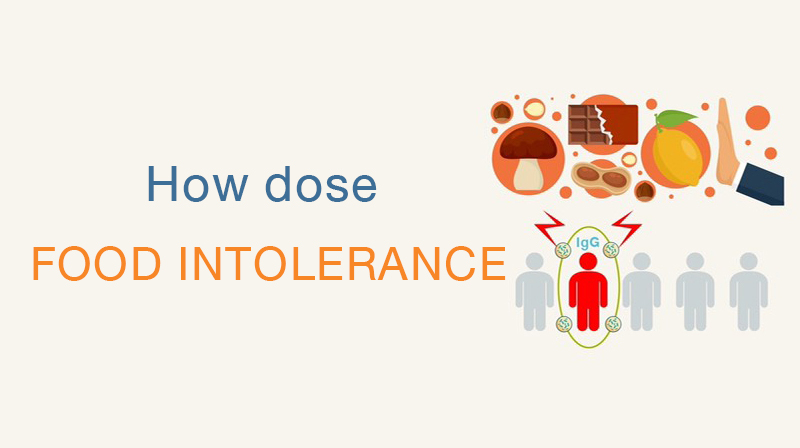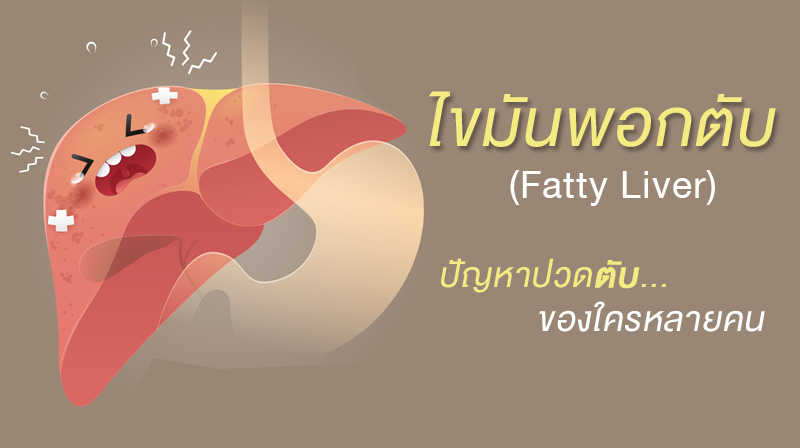
Food Intolerance
Conventional allergy testing looks for IgE reactions only. These types of reactions typically occur immediately after contact with the allergen, and in some cases can cause serious, even fatal, health problems. Potential IgE reactions include swelling of the lips and tongue, hives, bloating, abdominal pain, or sudden diarrhea. These are the reactions that people usually think of when they hear the word allergy.
The problem with this type of testing is that most food allergies are not IgE reactions, but are rather IgG reactions, which usually show up hours or even days after ingestion of the allergen. It is called food intolerance. They are generally not nearly as dramatic as the more severe IgE reactions, and usually result in "mere" constipation, diarrhea, bloating, gas and abdominal pain.
How does food intolerance occur?
- Food intolerance susceptibility appears to be influenced by eating habits such as eating the same type of food.
- Food intolerance usually occur in some people that the gut reacts poorly to a specific food (Intestinal Hyperpermeability or Leaky Gut) and causing an allergic reaction.
- Imbalance of gut microbiota may cause the food intolerance. When beneficial bacteria are reduced (regularly taking antibiotics), yeast seize and reproduce rapidly, causing the leaky gut.
Food intolerance test could benefit you if you have suffered from:
-
Neurological
-
Migraine, Headache, fatigue
-
Depression, Anxiety, Attention Deficit Hyperactivity Disorder (ADHD)
- Respiratory
- Breathing problems, sinusitis, Asthma
- Muscle/Joint
- Arthritis, Fibromyalgia
- Gastrointestinal
- Nausea, Bloating, Abdominal pain
- Constipation, Diarrhoea
- Weight control
- Dermatological
- Urticaria, Skin problems
- Itchy skin, Rashes
Food Allergy Test at Panacee
1. You don't need to fast before the blood test.
2. The result will be reported based on 222 items which is divided to 9 groups including egg/dairy products, meat, fish/seafood, vegetables, fruits, grains, herbs/spices, nuts and others
3. Level of IgG indicates the degree of food intolerance.
4. The small amount of blood sample will go through the IgG test. The results are analyzed by Microarray machine without personal bias.
5. After getting the results, our doctor will give the recommendation regarding the diet plan to the patient to cure the food intolerance problem, which is different in each person. The physician team at Panacee Medical Center will take a good care of patient for the best result.
The degrees of IgG level are ELEVATED , BORDERLINE, NORMAL
ELEVATED: A strong antibody reaction to that particular food. These are the primary problem foods. You should eliminate them from your diet at least 3-6 months.
BORDERLINE: A lower antibody reaction to that particular food. You should reduce and rotate these foods to avoid an increase in the intolerance. You can eat this food for 1-2 times/week.
NORMAL: No significant reaction to that particular food. You can eat these foods without restriction.






